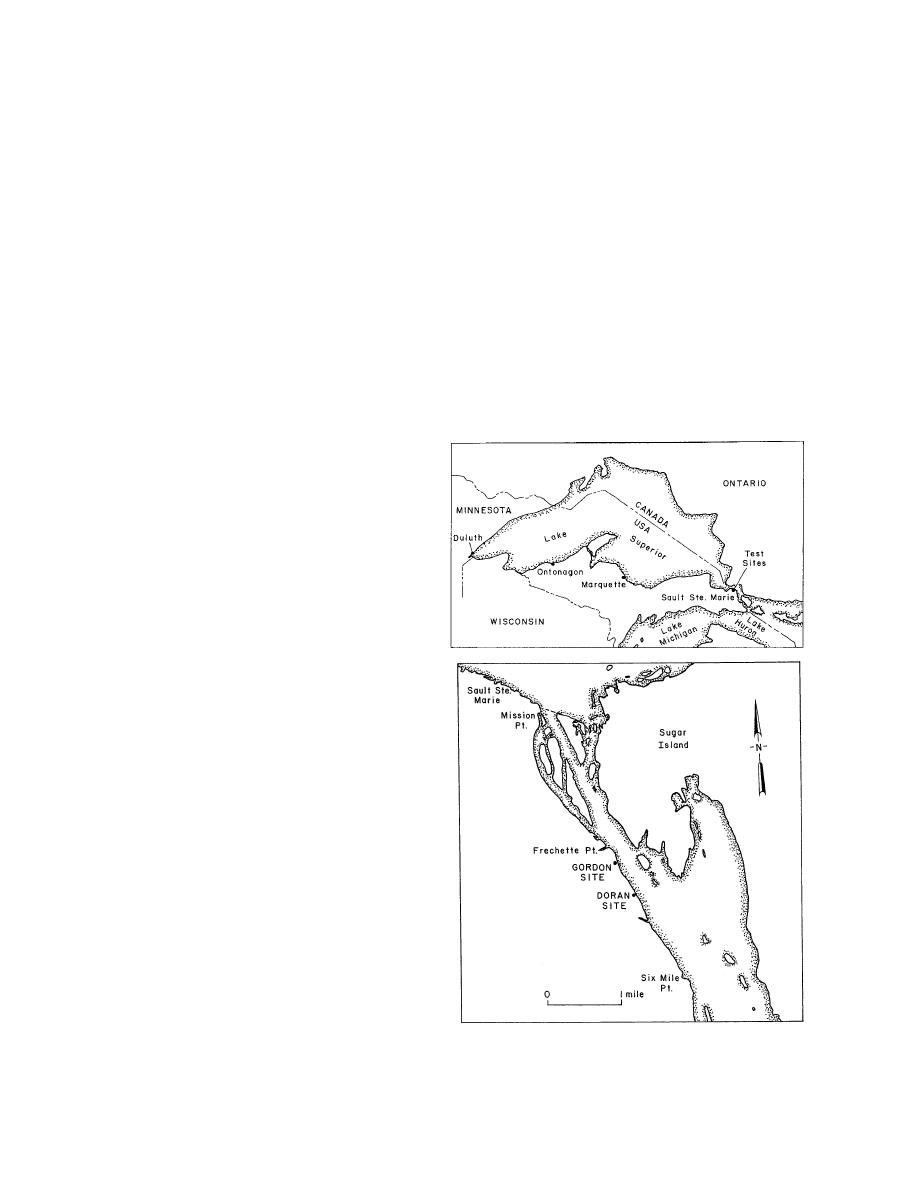
most often due to the presence of swift, turbu-
channel. Those fish found in the channel were
lent ambient water velocities. There are some ar-
generally winter-active and could presumably
eas along the Sault Ste. Marie, Ontario, shoreline,
avoid impacts during vessel passage. The major
however, where thermal discharges may contrib-
effect of winter navigation on waterfowl appeared
ute. Ship-induced water velocities would have
to be flushing during vessel passage, but this oc-
to significantly exceed these ambient velocities
curred mainly in April in the St. Marys River, af-
before turbidity could be noticeably increased.
ter the traditional shipping season had resumed.
The open water at the Edison Soo site is not only
Its physiological significance is unclear. Other
highly turbulent, but the large inflow of water
concerns were centered on changes in open-wa-
from the power canal would serve to dilute or
ter areas, but it does not appear that the critical
flush any ship-induced turbidity.
areas described would be significantly affected
by vessel passage.
Summary
Although numerous potential mechanisms for
VIBRATIONS CAUSED
environmental damage due to extended season
BY SHIP TRAFFIC
navigation have been proposed, the results of stud-
ies on the Great Lakes connecting channels thus
One of the problems identified during the eight-
far provide no substantive documentation of ac-
year demonstration program was vibrations on
tual damage. If these damage mechanisms are
shore caused by ship traffic in ice. Wuebben (1977)
indeed valid, the lack of documentation may be
because the effects are not sufficient to cause last-
ing changes or because of the complexity of bio-
logical response and its interpretation given a short
period of record. Most of the documentation rel-
evant to winter navigation on the Great Lakes
occurred on the St. Marys River in 1979 or later.
This allowed only one season, 1979, with nearly
year-round navigation, and the "baseline" data
collection efforts in subsequent years followed
several seasons of year-round navigation under
the demonstration program.
Increases in turbidity or suspended solids were
cited as potential causes of damage for benthos,
aquatic plants, fish and birds, but no significant
damage was documented. Further, the data do
not suggest large or persistent changes in these
parameters, and ambient variations were found
to equal or exceed vessel passage values. There
was some evidence that benthic drift rates might
be higher for navigation in ice, but the magni-
tude and significance of this increase could not
be determined. Two studies showed that macro-
benthos densities were not significantly affected
by navigation in ice. Similarly the possibility of
damage to emergent vegetation by the movement
of ice frozen about rootstocks was discussed but
not observed. The ice movements could be due
to either vessel-induced water level fluctuations
or ice breakup in the spring.
For fish the major effects were considered to
be increases in suspended solids and damage to
aquatic vegetation. Direct damage to fish by ships
was largely discounted since the vast majority
Figure 15. Location of test sites on the St. Marys River.
of fish were found to be outside the navigation
36



 Previous Page
Previous Page
